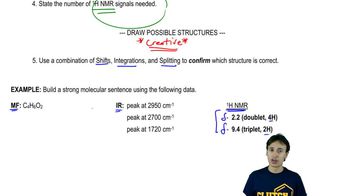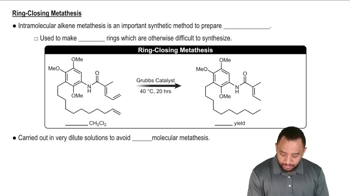Show how you would synthesize the following compounds, starting with acetylene and any compounds containing no more than four carbon atoms.
a. hex-1-yne
b. hex-2-yne
c. cis-hex-2-ene
 Verified step by step guidance
Verified step by step guidance Verified video answer for a similar problem:
Verified video answer for a similar problem:



 3:25m
3:25mMaster Predict the major product. with a bite sized video explanation from Johnny
Start learning